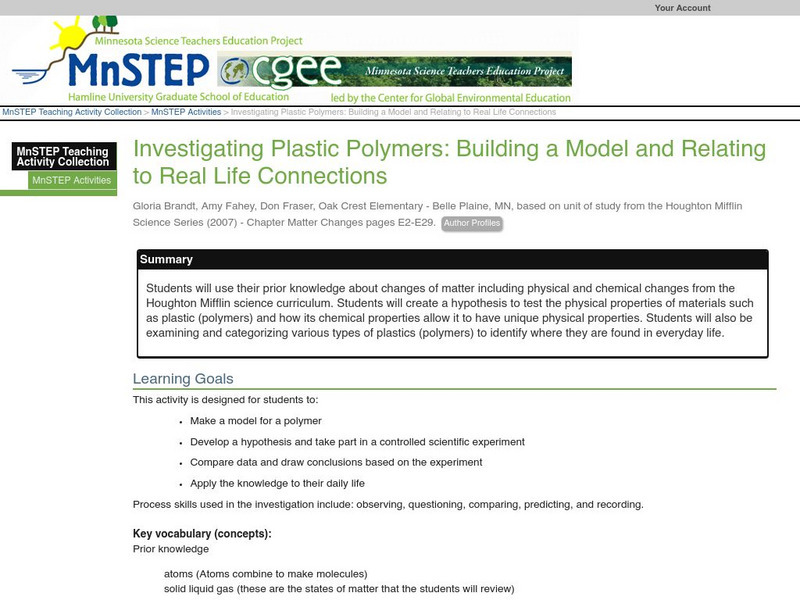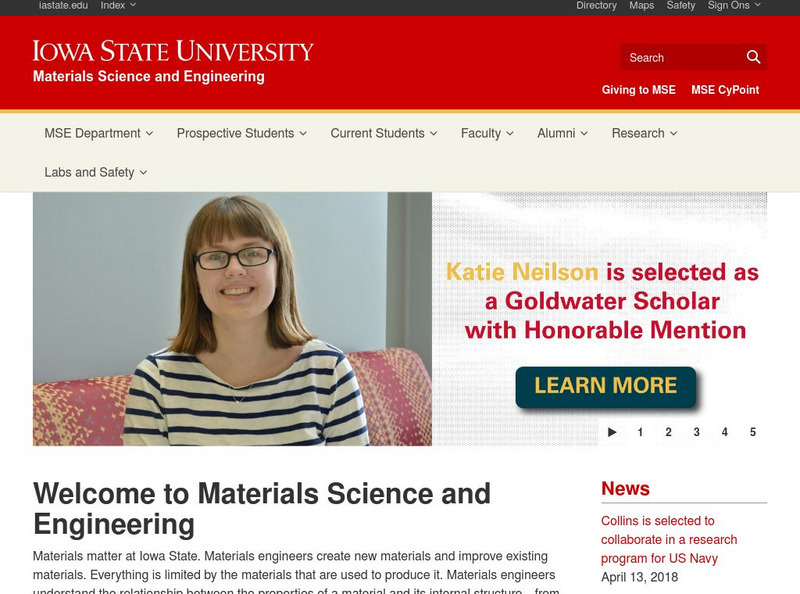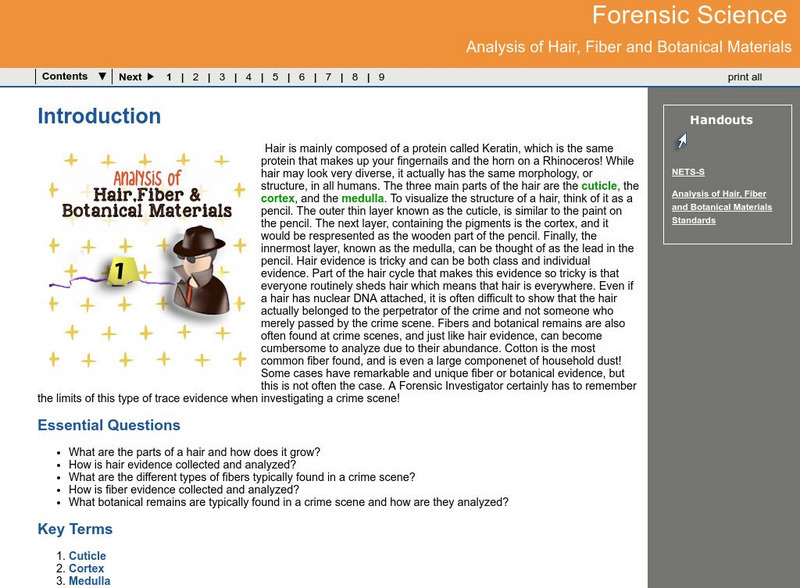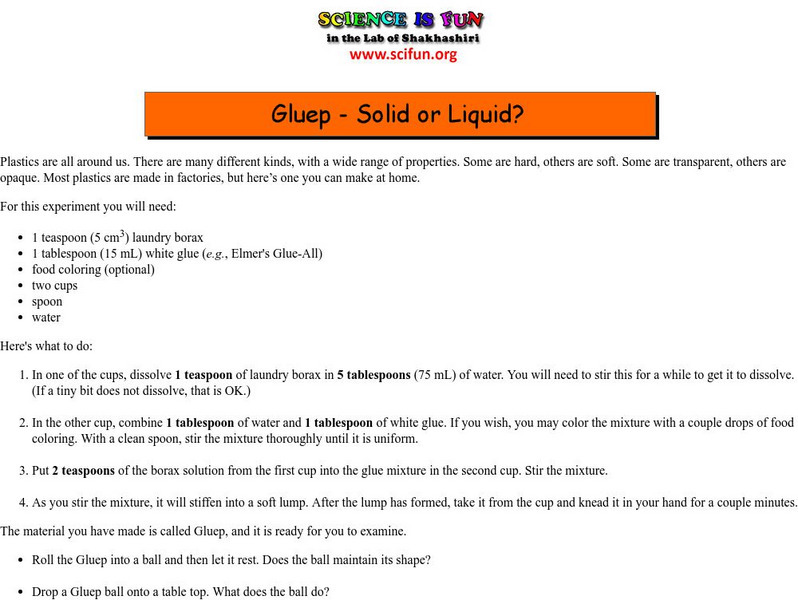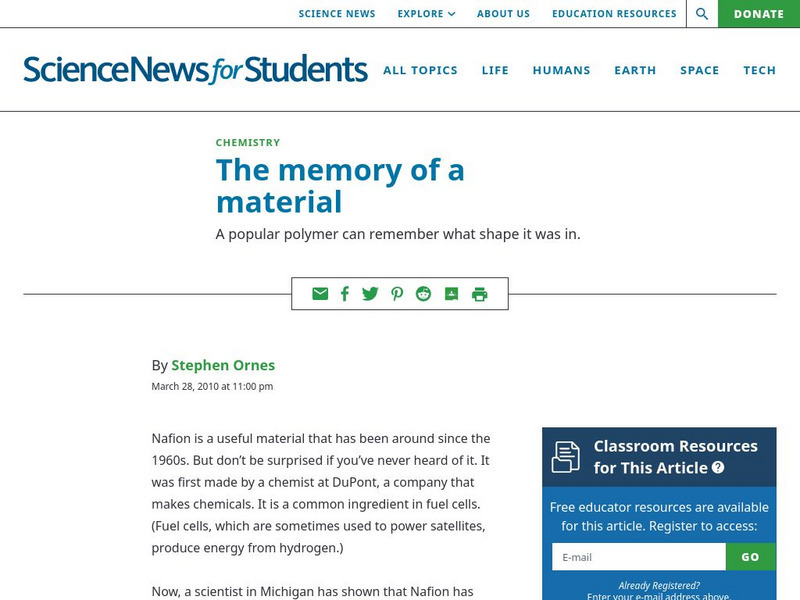Curated OER
Exploring Life in the Coral Reef
Students study life forms in coral reefs. For this ocean life lesson, students study life in coral reefs as they create a coral reef sculpture.
Curated OER
Burlap Weaving Gone Wild
Explore art using fabric with this resource. Learners talk about weaving and create art work after discussing this important technique. This is a great way integrate art and history.
Teach Engineering
Battle of the Beams
Make the strongest beam possible using taffy? Groups mold a taffy-water mixture into a beam and a reinforcing material of their choice. To finish the final installment of a two-part series, participants test its strength by adding...
Curated OER
The Bio-fuel Project: Creating Bio-diesel
Students investigate bio-fuel. In this investigative lesson, students create bio-fuel from vegetable oil waste. Students will analyze, predict, collect and synthesize data from their experiments with bio-fuel.
Curated OER
Classroom Triangles
Students use bearing measurements to triangulate and determine objects' locations. Working in teams of two or three, students must put on their investigative hats as they take bearing measurements to specified landmarks in their...
Curated OER
Myth of the Western Man
Students identify ways in which history and culture influence identity. They make a time-line and research dates to identify their significance, as well as, create a self portrait pictorially or verbally, that explores the complexity of...
Massachusetts Institute of Technology
Mit: Open Course Ware: Courses: Polymer Science Laboratory
College-level chemical engineering course highlighting polymers. Course topics focus on the range of properties of polymers, methods of synthesis, and physical chemistry. Course features include a list of related readings and a large...
Science Buddies
Science Buddies: Slime Chemistry
Have you ever wondered how fun toys like Silly Putty, Gak, and Slime are made? These products are so much fun because of the properties of polymers, which make them delightfully bouncy, stretchy, sticky, moldable, breakable, hard, soft,...
Science Education Resource Center at Carleton College
Serc: Investigating Plastic Polymers: Building a Model
Students will use their prior knowledge about changes of matter including physical and chemical changes from the Houghton Mifflin science curriculum. Students will create a hypothesis to test the physical properties of materials such as...
Iowa State University
Iowa State University: Materials Science and Engineering
Learn about Iowa State University's department of Materials Science and Engineering, including news, academics, people, research, and general information.
Concord Consortium
Concord Consortium: Science of Atoms and Molecules: Nucleic Acids and Proteins
Through this activity, students work with macromolecules, proteins and nucleic acids. The focus is on the atomic structure of proteins, how linear polymers are made, and the surface charges of the resulting polymers. . Multiple-choice...
Georgia Department of Education
Ga Virtual Learning: Forensic Science: Analysis of Hair, Fiber and Botanical Mtl
This comprehensive interactive tutorial explores forensic science, particularly within the area of hair analysis. Investigate the parts of a hair and how it grows. Learn how is hair evidence is collected and analyzed and what different...
American Chemical Society
American Chemical Society: Science for Kids: Characteristics of Materials
Engaging hands-on science lessons for grades 2-6 on the properties of different materials.
CK-12 Foundation
Ck 12: Physical Science: Carbon Monomers and Polymers
[Free Registration/Login may be required to access all resource tools.] Difference between a monomer and polymer and examples of natural and synthetic carbon polymers.
Other
Moorland School: Earth Science Zone: Polymers
A webpage showing how the double bonds of alkenes can open up to form polymers.
Museum of Science
Museum of Science and Industry: Online Science: Activities: Make Slime
Step-by-step instructions, with photos, of how to create slime made of polymer chains using Borax and white glue.
Science is Fun
Science Is Fun: Gluep Solid or Liquid?
In this experiment, students create a polymer substance called Gluep, then investigate its properties. Includes a detailed explanation of how the polymer molecules bond together to form the plastic.
Society for Science and the Public
Science News for Students: The Memory of a Material
Describes the properties of a synthetic polymer, Nafion, which can 'remember' shapes that it takes, based on the temperature.
Maryland Science Center
Maryland Science Center: Bouncy Balls [Pdf]
Use simple materials in a chemical reaction to create a bouncy ball, and learn about long-chain polymers.
TeachEngineering
Teach Engineering: Fun Look at Material Science
Students are introduced to the multidisciplinary field of material science. Through a class demo and PowerPoint presentation, they learn the basic classes of materials (metals, ceramics, polymers, composites) and how they differ from one...
Other
American Chemistry Council: History of Polymers & Plastics for Teachers
This resource presents a teacher guide that offers information on the history, structure, characteristics, forms, and common uses of plastics and polymers.
Other
American Chemistry Council: History of Polymer and Plastics for Students
This resource presents a brief guide introduces the history, structure, and characteristics of plastics and polymers.
Science Bob Pflugfelder
Science Bob: Homemade Slime!
Contains a procedure for creating slime -- a polymer formed by mixing water, borax, Elmer's glue, and food coloring. Following the procedure, the site contains a brief description of what polymers are.
Math Science Nucleus
Math/science Nucleus: Polymer Storybook
This animation discusses polymers and the properties of polymers in a storybook format. The story covers polymers both plastic and natural, and provides interesting information.








